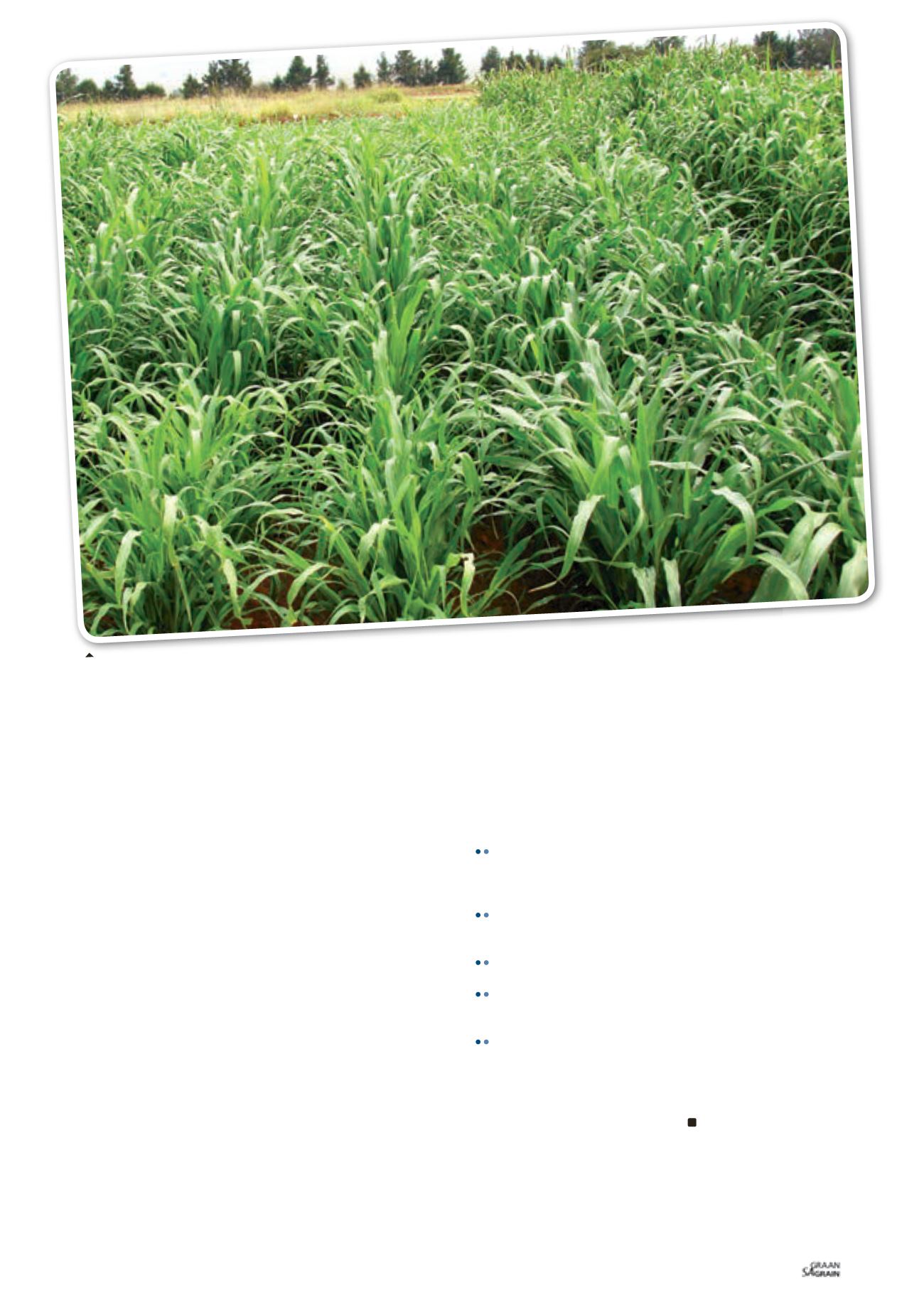

cash crop or silage; provided there is enough time, nutrients and soil
water for it to establish before early fall frosts.
In certain situations an annual cold season legume (or mixture) could
be planted directly after termination of the cover crop, such as graz-
ing vetch (
Vicia villosa
), oats and radish, followed by a cash crop.
After killing the cover crop, weeds in the fallow must be controlled
to conserve soil water to maximise the benefit of the cover crop. A
suitable no-till planter should be used to plant the grain crops direct-
ly into the residues of the cover crop, without any other cultivation
practice disturbing the soil.
Normal integrated fertiliser (based on soil fertility levels and yield
targets), weed and pest control practices should be followed. Dur-
ing the transformation phase after newly established CA grain fields
(e.g. during the first few years), a 30% increase in N-fertilisers is
recommended on maize, due to the immobilisation of N in the soil.
Thereafter the availability of N to the plant should be assessed
through an appropriate analysis, and fertiliser application should be
adjusted accordingly.
Babala should preferably be flattened with a knife-roller at silking
or flowering stage before it produces viable seeds which could be-
come a weed. Herbicides could also be applied when necessary to
kill regrowth quickly. The cover crop residues remain on the soil sur-
face providing cover that limits erosion, enhance water infiltration
and reduces their rate of mineralisation.
Conclusion
Pearl millet is an annual summer grass that is well-adapted to well-
drained areas and grows well on poor and infertile soils, as well as
highly fertile soils. It can either be used for hay, silage, foggage or
can be grazed too. Because of this species’ high nutritive value, it
is a recommended species to provide high quality pasture without
significant amounts of fertiliser needed, especially if it is being
planted in crop rotation with crops that receive high levels of ferti-
liser and irrigation.
This species provides the opportunity to remove excess levels of
nutrients in the soil as well as drying out extremely wet soils. Very
few anti-quality factors occur within this species, however nitrate
poisoning is a potential threat in well-fertilised pasture stands, but
unlike sorghum, Pearl millet is safe for horses.
Important characteristics of new cultivars are:
The cultivars do not contain prussic acid, implying it can be
grazed heavily under various environmental and soil condi-
tions without problems. The ideal pasture for sheep, cattle and
horses.
Its rapid regrowth rate and high forage quality makes this an ide-
al pasture crop for direct grazing, for finishing lambs and wean-
ers or as a dairy pasture.
It should be utilised when the plant reaches a height of 300 mm -
500 mm for optimum quality and energy content.
Rotational grazing ensures good production and should not be
grazed at a height lower than 150 mm - 200 mm in order to en-
sure rapid regrowth.
Due to its high leaf content, good hay can be made.
For more information, contact Dr Wayne Truter at
wayne.trut-
er@up.ac.za ,Prof Chris Dannhauser at
admin@GrassSA.co.za ,Dr Hendrik Smith at
hendrik.smith@grainsa.co.zaor Mr Gerrie
Trytsman at
gtrytsman@arc.agric.za .References
Gerber, H.S., Botha, P.R. and Meeske, R. 2006.
Die produksie van voersorghum- en
bastervoermanna kultivars as wei- en kuilvoergewasse. Outeniqua Proefplaas In-
ligtingsdag bundel.
pp 2 - 21.
Robertson, M.M., Botha, P.R. and Gerber, H.S. 2009. The effect of planting method
and seeding rate on the dry matter production of forage sorghum hybrids and hy-
brid millets.
Grassroots
. February, 2009. Vol 9, No 1, pp 31 - 38.
Pearl millet at grazing height.
29
December 2014

















